作者:朱玲(中国社会科学院经济研究所)
何伟(中国社会科学院经济研究所)
来源:《中国经济学人》(China Economist)2019年第3期
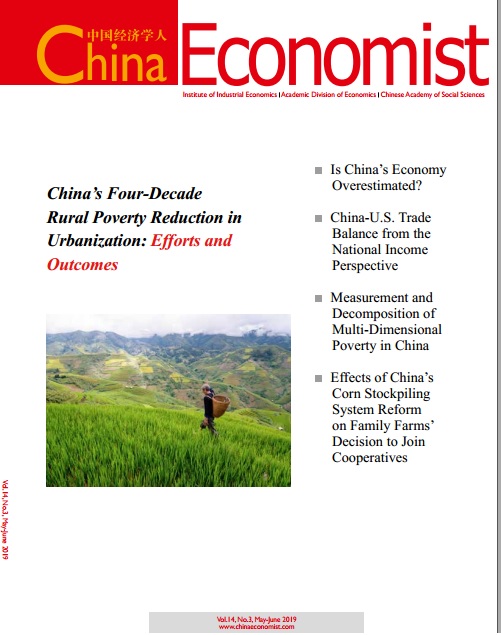
注:原文《工业化城市化进程中的乡村减贫四十年》刊发在《劳动经济研究》2018年第4期,共3万字。
Abstract:Over the past four decades of reform and opening-up, China has basically eradicated hunger and lifted over 700 million rural people out of poverty. China’s poverty incidence has dropped to about 3%. These achievements can be attributed to the following factors: First, farmers have regained their economic freedom that was lost in the planned economy era. Second, China’s top decision-makers have followed people’s will by transitioning into the market economy and thus achieved rapid economic growth. Third, the government has continuously enhanced infrastructure and human capital investments, and implemented a social protection system in rural and urban areas nationwide. Fourth, integrated poverty reduction measures have been carried out to assist poor people in disadvantaged regions and those with poor capabilities. Given the diminishing poverty reduction effect of pro-poor fiscal funds, it is necessary to avoid direct administrative interventions in the operational decision-making of poor households and broaden institutional space for rural cooperative economy. Meanwhile, China should remove inequalities in the rights betweenthe urban and rural households, facilitate the labor migration of the poor, and promote the urbanization of rural people.
Keywords:four decades of reform and opening-up, transition of dual economy, urban-rural divide, rural poverty reduction
JEL Classification Codes: F63, I30, O20, P25
DOI:1 0.19602/j .chinaeconomist.2019.5.01
1. Introduction
Since reform and opening-up in 1978, China has made phenomenal achievements in reducing absolutepoverty. Over the past four decades, over 700 million rural poor have been lifted out of poverty. According to the National Bureau of Statistics (NBS), theincidence of poverty was reduced to 1.7% by the end of 2018①. This paper intends to review the journey of rural poverty reduction in China over the past four decades by discussing changes in the incomes of the poor and extent of the satisfactionof their basic needs, as well as revealing the extent to which their basic rights are protected. In particular, thepaper aims to answer the following questions: First, which institutional changes are conducive to poverty reduction and which are not? Second, which changes are challengesby farmers to institutional barriers and which are choices made by policy makers? Third, what are the existing institutional arrangements that impede poverty reduction and how to eliminate those barriers? To answer these questions, we will refer to existing policy documents, statistical communiques, thematic research literature and our previous fieldwork records as the basis of our discussion.
————————————————————————————————————————————————————————————————————————————————
①NBS, China’s Rural Poor Populations Reduced by 13.86 Million in 2018, http://www.stats.gov.cn/tjsj/zxfb/201902/t20190215_1649231.html.
————————————————————————————————————————————————————————————————————————————————
2. From Eliminating Hunger to Getting rid ofPoverty
This section divides the past four decades since 1978 into five stages according to milestones in the urban-rural separation, and discusses the focal issues raised in the previous section.
2.1 Rural Reforms Initially Carried Out to Meet Subsistence Needs (1978-1985)
In China, extreme poverty is traditionally described as “having not enough food to fill one’s stomach” and “scantily clad” - food and clothing are necessary conditions for human survival. China’s rural economic reforms were carried out initially in 1978 to meet farmers’ subsistence needs and deliver adequate food for its 900 million people.
Before 1978, farmers in provinces like Anhui, Sichuan and Guizhou took the initiative to implement the household contract responsibility system to incentivize food production, which was insufficient at that time. Their actions were supported by local government officials butraised intense controversy among top decision-makers, who finally reached consensus under the following considerations: First, thepeople wished to eliminate hunger.Second, there was a need to reduce the supply of relief grains and funds and thus alleviate the fiscal burden.Third, Deng Xiaoping’s political decision to support the reform was respected.Fourth, the reform was justified by the rapid agricultural and rural economic growth following the reforms(Du, 2005).
From 1982 to 1986, the Chinese government each year issued No.1 Documents based on solid research and extensive political consultation. These policy documents reaffirmed the great initiative taken by farmers in reforming the land tenure system and timely responded to the ensuing changes in social and economic situations. A series of institutional innovations were made to unleash the dynamism of China’s rural economy in various aspects, such as encouraging rural industrial and commercial activities, creating distribution channels, adjusting the agriculturalstructure, abolishing the centralized grain procurement and distribution system, increasing agricultural investment, and modifying industrial-agricultural and urban-rural relations. The dissolution of the People’s Commune system during this period expanded farmers’ economic freedom and allowed them to get rid ofhunger and poverty through their hard work.
From 1978 to 1985, the number of the poorwithout adequate food and clothing in rural China was reduced from 250 million to 125 million, and their percentage in the total rural population fell from 30.7% to 14.8% (the State Council Information Office of the People’s Republic of China, 2001). Most of those still without adequate food and clothing did not benefit from the opportunities derivable from the reforms since they lived in harsh environmentand lacked human capital. Regions where they lived either had poor natural resources and infrastructure or lacked infrastructure despite resource potentials. Social and economic conditions in such regions increasingly fell behind the national average. In its rural reforms, therefore, China’s central government started to implement apro-poor plan in Gansu and Ningxia in 1982 with the goal of meeting the subsistence needs of the poor. By the end of 1985, this goal was incorporated into the national rural poverty reduction strategy, and the poverty line was defined as 200 kilograms of grain per person/year and 200 yuan per person/year on average (Zhu and Jiang, 1994).
2.2 Job Creation in Opening-Up and Regional Development (1986-1982)
After the rural land tenuresystem was reformed, different regions followed distinctive paths in reducing poverty according to their local development conditions. Mostpoor people still suffering from the threat of hunger resided in the countryside of China’s western region. Thus, the first national poverty reduction programunveiled in 1986 was highly targeted at specific regions, and the central government allocated funds to support 331 poorcounties. Unlike the traditional approach to poverty relief for less developed regions under the planned economy, China’s poverty reduction strategy in this stage focused on growth incentives and efficiency. Instead of offering relief alone, the central government granted farmers and herdsmen more operational autonomy such as freedom to sell agricultural produce andlowered tax rates, and encouraged local governments and people in poor regions to develop the economy according to local conditions. Central and local governments invested in poor regions, while local residents also contributed a workforce, to improve local living and working conditions. The central government’s functional departments made all-round investments in poor regions, such as investments in science and technology, education, healthcare, and forestry and water conservancy.
China’s nationwide poverty reduction campaign was initially mobilized by the government and implemented with a top-down approach through the administrative system, which is another characteristic different from other developing countries. Given the public goods nature of poverty reduction activities and particularly infrastructure investments, such a government-led approach was advantageous at the time, when China’s social organizations and market mechanisms were underdeveloped. Nevertheless, external administrative interventions may, together with poverty-inducing factors, restrict the initiative of aid recipients. China’s rural poverty reduction before the dawn of the new century was designed to help people find ways to alleviatepoverty locally within the aided regions. The goal was to ensure that each farmer should have 1 mu (0.067 hectares) of farmland on average over 1991-1995 to ensure subsistence.
In China’s coastal regions and particularly the Yangtze River Delta and Pearl River Delta regions, however, farmers started to engage in more diversified economic activities that were essential for them toeliminatepoverty in populous regions with limited arable land. In the late 1980s, China’s planned economyrestrained rural labor from moving to cities, forcing them to create industrial enterprises in their own villages and townships and giving rise to township and village enterprises (TVEs), which was welcomed by the central government under the policy that “(farmers) should seek nonagricultural jobs without leaving their hometowns and work in factories without entering cities.” In retrospect, such a policy was expediency at a time of institutional distortions that prevented peoplefrom the free migration, and was not a natural step in the process of industrialization and urbanization.
Deng Xiaoping’s speeches during his inspection tour in southern China in 1992 provided legitimacy and public opinions in favor ofnon-stateenterprises. During 1986-1992, farmers benefited a lot from rapid industrial development in China. Income growth of farmer households stemmed from diverse income sources. For instance, wage income as a share in the per capita net income of farmer households rose from around 10% during 1983-1984 to 20.2% in 1990 (see Figure 1). Reform and opening-up in China’s coastal regions led to industrial and commercial prosperity in local villages and townships, which developed into small towns or cities invarious size. Labor demand derived from rapid growth in the urban economy created conditions for the massivelabor to migrate from the less-developed areas to the developed and from the villages to the cities.
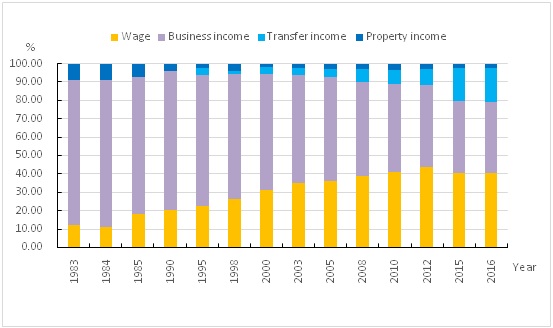
Figure 1: Income Sources of Rural Households
Source: Calculated based on data from China Statistical Yearbook 1986, p.673; China Statistical Yearbook 2009, p.338;China Statistical Yearbook 2005, p.359, China Statistical Yearbook 2013, p.399; and China Statistical Yearbook 2017, p.168.
Notes: The statisticsarecalculations onper capita net income for 2012 and before and per capita disposable income for the following years. Wage income for 1983 and 1984 refers to workers’ earnings, including income from collective operations and income from economic cooperatives. There are no categorized “property income” and “transfer income” data for 1983, 1984, 1985 and 1990.
2.3 Poverty Reduction Effectsofthe Regional Labor Migration(1993-2002)
In 1993, the 14th CPC National Congress called for creating a socialist market economy as the direction of further reforms. This policy spurrednon-statesector growth withan incremental reform approach amid China’s industrial and urban development. It also explored a feasible path to allow rural laborto migrate to cities, which was constrained under the planned economy. In 2002, total employment in urban areas reached 251.59 million people, 71.5% of themwere employed in the non-state sector of the economy (see Figure 2). They include over 100 million workers who moved from the countryside.
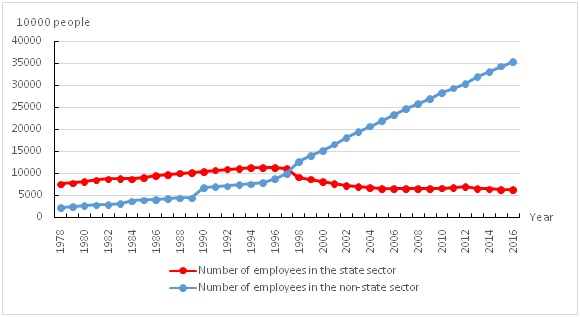
Figure 2: Number of Urban Employees in the State Sector and the Non-state Sector, 1978-2016
Source: China Statistical Yearbook of relevant years.
Notes: Since 2002, NBS has made minor adjustments to the total number of urban employeespublished during 1990-2001. This chart shows adjusted data. Number of urban employeesin the non-state sector = Number of total urban employees- Number of urban employees in the state sector.
Migration of rural labor to cities in search of jobs in the industrial and service sectors theoretically creates a poverty reduction effect. Such migration is drivenby the impetus from the two sides: it is pulled off by the urban-rural income gaps and pushed out by the income differentials within the rural sector as well. By moving to cities, low-income rural workers can earn higher incomes and improve their human capital, which in turn will contribute to urban and rural economic development. Despite the benefits, such migrationis inhibited by institutional barriers left over from the planned economy, exclusion fromurban residents, and policy barriers that municipal governments imposed.
Despite the inhospitable institutional environment facing ruralworkers, their migration from central and western parts of China remains irresistible. According to the whitepaperonRural Poverty Reduction and Development in China, Sichuan Province is the biggest source of rural migrant workers in China with more than eight million workers employednon-locally and remitting funds back to their hometowns worth about 20 billion yuan each year (the State Council Information Office of the People’s Republic of China, 2001). The question is, are those migrant workers poor people? It can be said for sure that not all of them are from places of extreme poverty and not all of them are the poorest since the extremely poor either cannot afford the cost of migration or lack marketable skills.
Most rural migrant workers belong tolow-income groupsin their hometowns and obviously part of the poor when they work in cities. By international standards, they are people yet to be lifted out of poverty. Otherwise, they wouldn’t endure the hardships of leaving their hometowns and engaging in menialjobs considered bymost urban dwellersto be unacceptable. According to existing literature, the percentage of rural migrant workers in the rural workforce from poor regions jumped from 19.9% in 1997 to 25% in 2000, and the percentage of households involved rose from 39.9% to 51.1%. After members from poor families moved to work in cities, they remitted cash to their families and reduced the poverty incidence of their family members (Caiet al., 2006).
What were the living conditions of ruralhouseholds left behind in poor areas during 1993-2002? During this period, goals of the National Plan to Deliver Subsistence for 80 Million People in Seven Years (1994-2000) werebasically achieved, with an annual average growth of grain production in poor areasat1.9% and an annual average growth in the per capita net income of farmers at12.8%, and most farmers had solved the problems offood insecurity. By the end of 2000, 95.5%, 89%, 69% and 67.7% of administrative villages in poor areas had access to electric power, transportation, postal service and telephones, respectively. Among 592 poor counties identified as national poverty reduction priorities, 53.7% hadbasically universalized nine-year compulsory education and had eradicated illiteracy among the young and adult groups. These achievements created human capital and infrastructure conditions for the further development of the local economy and poverty reduction.
2.4 Extensionof the Social Protection and Deepening of Poverty Reduction Campaigns (2003-2011)
Since the 1990s, China has integrated into the global economy in its market-oriented reforms, and its economy has expanded rapidly. At the same time, social and economic transitions also gave rise to challenges such as widening income and welfare gaps between urban and rural areas, and between regions, sectors and groups of people with different household registration, gender, occupation and social status. During the SARS outbreak in the spring of 2003, millions of rural migrant workers returnedhomefor fear of infection, which highlights the lack of social protection for rural people. The fact that China’s social policy reforms lagged behind its economic reforms also drew great attention from international organizations.
Facing these challenges, the 16th CPC National Congress called for balancing various interests in the process of reform. Among reform priorities, the Chinese government called for “establishing a system that should help to gradually changethe urban-rural divide” and “improving employment, income distribution and social protection.” Although some of the decisions are yet to be fullymaterialized, better-than-expected results have been achieved in social protection, public services and poverty reduction.
(1) The “new rural medical cooperative system,”equivalent to China’s rural medical insurance,started to be implemented nationwide in 2003. Governmentsat various levels contributedthe majority to the cooperative medical fund, and farmers contributedless than 30%. By the end of 2006, China’s countryside had established a medical relief system. In 2011, the new rural cooperative medical system covered close to 98% of China’s rural population and, to some extent, reduced their risk of impoverishment resulting from exorbitant medical costs (Zhu, 2014).
(2) In 2009, the central government enacted relevant policies for rural migrant workers to participate in the basic pension insurance for urban employees, and introduced a programon the new rural pension insurance system, which was piloted in the following year. Notably, the new rural pension insurance system has a non-contributory public pension fund (basic pension fund).
(3) In 2007, a minimum subsistence guaranteesystem (“dibao”) started to be implemented throughout rural China.
(4) After the tax-for-fee reform in 2003, the farmers’ payment burdens in the name of “township pooling” and “village retentions”and the agricultural tax were rescinded, and rural community infrastructure construction and public service supply started to be funded primarily by the government.
(5) During 2001-2011, China’s central and provincial governments stepped up fiscaltransfer to poor counties on the priority list, and issued integratedpro-poor policies. The policy goals shifted from subsistence security, primarily by eradicating income poverty, to alleviating multidimensional poverty. This policy approach is vividly summarized in the Outline of China’s Rural Poverty Reduction and Development (2011-2020) as “two no worries, three guarantees,” i.e. poor people should be free from worries about food and clothing and have access to compulsory education, basic healthcare and safe housing. Targetedpro-poor policy beneficiaries changed from poor counties to poor townships, villages and farmer households. International organizations and domestic civil societies also focusedtheir poverty reduction concepts, projects and funds on poor areas (the State Council Information Office of the People’s Republic of China, 2011).
Meanwhile, the prevalence of underweight and stunting among children aged below five in poor areaswas reduced from 15.8% and 36.9% in 2000 to 8% and 20.3% in 2010, respectively (Table 1). Since children’s nutrition status is more sensitive to household food security, these twofalling indicators suggest that China is close to achieving its goal of eliminating hunger. In 2011, the Chinese government raised the rural poverty line toa per capita annual income of 2,300 yuan, which was 80% above the poverty line of 2010. In this manner, the households previously above the poverty line and those recently lifted out of poverty were included into the scope of policy beneficiaries to effectively prevent and reduce poverty.
Table 1: Nutrition Status of Children Aged below Five in Rural China, 1990-2013 (%)
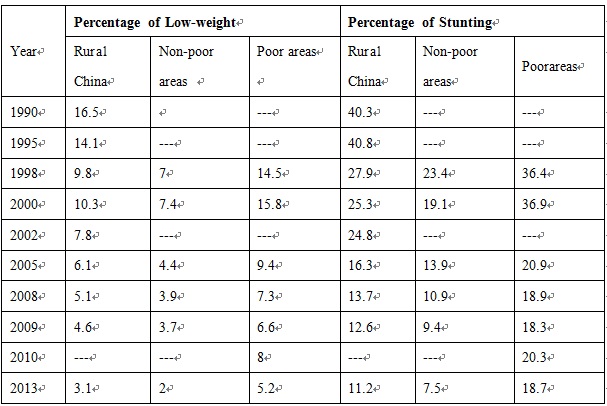
Notes: “---” means no available data. Data for 1990-2000 and 2005-2010 are referenced from Chen et al. (2011). Data of 2002 and 2013 are from Yue et al. (2016).
2.5 Income Redistribution in Targeted Poverty Reduction Effort(2012-Present)
After the dawn of the 21st century, income distribution in China has become highly unequal by international standards, with the Gini coefficient of household income continuously above 0.4. In 2013, China’s Gini coefficient reached 0.433, down by about 11% over 0.486 in 2007. The contribution of urban-rural income gap to overall income gap in China was reduced from 38% to 15%. Such positive changes have a lot to do with China’s increasing public policy dividends regarding social protection, public services, poverty reduction through development, and a reversal in the labor market supply and demand equilibrium (Li et al., 2017).
The targeted poverty reduction strategy implemented since the 18th CPC National Congress (2012) is designed to reduce poverty and income gaps in China on all fronts. To achieve the goal of eliminating absolute poverty in the countryside by 2020, China’s 13th Five-Year Plan (2016-2020) identifies poverty eradication for people living below the current poverty line as a binding target, to which human, material and organizational resources have been devoted on an unprecedented scale.
(1) Indirect fiscal spending. For instance, 963,000 cadres were sent to poor villages. By the annual salary of 40,000 yuan for deputy heads of township governments in China’s central region (Hubei Province) in 2018, the total wage cost was about 38.5 billion yuan on average each year.
(2) Special poverty relief funds from the central government. In 2017, special poverty relief funds issued by the central government were close to 86.1 billion yuan, up about 3.87 times over 2010 (see Table 2).
(3) Fiscal transfers from the eastern to the western region. Under the State Council’s arrangements, the fiscal assistance mechanism at the inter-provincial level was extended to the inter-county level.
(4) Public investment projects implemented by central government functional departments. China’s central government has intensified pro-poor investments in transportation, water conservancy, and telecom and other infrastructures, as well as health and education programs for the vulnerable groups.
(5) Transfer of corporate revenues. The All-China Federation of Industry and Commerce mobilized 22,000 private firms to help poor villages. These firms not only donated money and materials but also coordinated with local governments, dispatched personnel to deliver vocational education and training, and assistedpoverty reduction through resettlement, e-commerce and tourism (Li and Han, 2017).
Since 2012, the number of poor people in China has fallen by over 10 million each year (see Figure 3). In 2016, cable TV and broadband penetration reached 94% and 80%, respectively, for farmer households in poor areas; 57% of farmer households lived in reinforced concrete or masonry houses; 67% had access to pipeline water supply, and 94% had own toilets (Department of Household Surveys, National Bureau of Statistics of China, 2017).
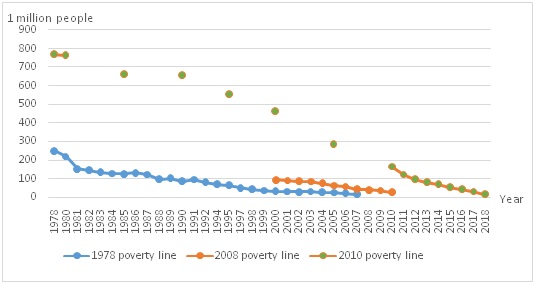
Figure 3: Number of Poor People in Rural China
Source: Data of 2017 and before are from theChina Statistical Yearbook 2018, and data of 2018 are from the NBS website, “China’s Rural Poor Reduced by 13.86 Million in 2018”,http://www.stats.gov.cn/tjsj/zxfb/201902/t20190215_1649231.html.
Note: Poverty line is expressed by per capita net income/year at the constant price of relevant years: 100 yuan for 1978; 1,067 yuan for 2008;2,300 yuan for 2010.
During the same period, fiscal poverty relief funds had a diminishing marginal effect of poverty reduction. Assuming that the increase of funds of other types remained constant, poverty reduction due toevery additional 100 million yuan of the central government poverty relief funds decreased from 390,000 people in 2012 to less than 70,000 people in 2017 (Table 2). The implication is that it is time to adjust the current poverty reductionstrategy.
(1) When the poverty incidence has dropped to 3%, the government may turn to social relief, social insurance and social services to achieve the goal of eradicating extreme (absolute) poverty and prevent poverty risks.
(2) Social security measures are not meant to replace poverty reduction policies. Instead, they will continue to enhance social relief, human capital and infrastructure investments to address the poverty causes for the hard-corepoor.
(3) Foster and develop a cooperative economy to replace government-led pro-poor industrial projects.
(4) Instead of sending cadres to villages, a service network of social workers should be developed.
(5) Urbanization policies should be compatible with poverty reduction policies, and equal social, economic and political rights with urban residents should be granted to rural migrants.
Table 2: Central Government Poverty Relief Funds and Number of Rural Poor (2010-2017)
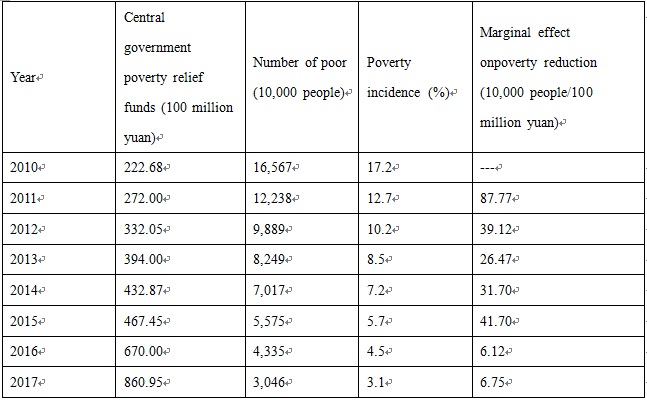
Source: Central government poverty relief fiscal fund data are from the State Council Information Office of the People’s Republic of China, 2016, China’s Poverty Reduction Actions and Human Rights Progress, http://www.scio.gov.cn/zfbps/32832/Document/1494402/1494402.htm. Poverty size and poverty incidence data are from the China Statistical Yearbook 2017. Central government poverty relief fiscal fund data of 2017 are from the Chinese government website “Central Government Allocated 86.095 Billion Yuan in Special Fiscal Funds for Poverty Relief, http://www.gov.cn/xinwen/2017-06/08/content_5200771.htm. Number of poor and poverty incidence data for 2017 are from the Chinese government website, “China’s Rural Poor Reduced to 30.46 Million by the End of 2017,”http://www.gov.cn/xinwen/2018-02/01/content_5262917.htm.
Notes: “Marginal effect on poverty reduction” in the table means the poverty reduction (10,000 people) due toevery additional 100 million yuan of central government specialpro-poor fiscal funds. Method of calculation: (number of the poor in previous years–number of the poor in the current year) / (fiscal funds of current year - fiscal funds of previous years), and unit of measurement is (10,000 people/100 million).
We follow the poverty line adjusted in 2011, which is the current poverty line, i.e. per capita annual net income of 2,300 (constant price of 2010).
3. Concluding Remarks
China’s reform and opening-up was launched whena large number of rural people were impoverished and starving. Over the past four decades, China has basically eradicated hunger and lifted over 700 million rural residents out of poverty. Rural poverty reduction in China is a process of giving back farmerstheir rights deprived in the agricultural collectivization campaign and the establishment of the planned economy. Institutional changes in the following timeframes have played a pivotal role.
From 1978 to 1985: China’s rural household land contract system not only granted farmers partial property rights but also gave them the freedom to work according to their own will.
From 1986 to 1992:The emergence of enterprises of different types of ownershipchallenged the authority of the planned economy and administrative diktats. The dogma that public ownership should be the sole form of socialist ownership came into question.
From 1993 to 2002:With the establishment of the socialist market economic system and China’s integration into the global economy, rapid urbanization and industrial and service sector development created tremendous labor demand. Young and adult people in central and western parts of China seized this opportunity to break the institutional barriers to the rural-urban migration as remnants of the planned economy and were allowed to seek jobs in cities.
From 2003 to 2011, the central government made great efforts to address its social policy loopholes, enabling more rural people to benefit from economic growth.
(5) Since 2012, the implementation of a targeted poverty alleviationstrategy has accelerated poverty reduction in China.
The fact that the marginal effect of the poverty relief funds on poverty reduction has significantly diminished indicates that China’s poverty reduction strategy needs adjustment: First, China should offer social protections to ensure the survival and development of the poor. Second, China should foster and develop the cooperative economy free from administrative direct interventions in the operational decisions of farmers and enterprises. Third, instead of sending cadres to villages, China should train social workers to help poor families and individuals overcome the social problems facing them. More importantly, China should eliminate inequalities in accessing public services and social protection and facilitate labor migration for poor families.
References:
[1]Cai, Fang, Dewen Wang, Yang Du, Juwei Zhang, Meiyan Wang. 2006. NongcunFazhan Yu ZengjiaNongminShouru (Rural Development and Increasing Farmers' Income). Beijing: China Labor and Social Security Publishing House.
[2]Chen, Chunming, Wu He, YuyingWang,Lina Deng,Fengmei Jia.2011.“Nutritional Status of Children During and Post-Global Economic Crisis in China.”Biomedical and Environmental Sciences24(4):321-328.
[3]Department of Household Surveys, National bureau of Statistics of China. 2017.ZhongguoNongcunPinkunJianceBaogao (Poverty Monitoring Report of Rural China). Beijing: China Statistics Press.
[4]Du, Runsheng. 2005. Du RunshengZishu: ZhonguoNongcunTizhiBiangeZhongdaJueceJishi(Du Runsheng's Self-Description: A Record of Major Decision-Making in China's Rural System Reform). Beijing: People's Publishing House.
[5]Li, Jing and Jin Han. 2017. “Zhengqi Heli ZhengtiTuopinGongjian De Dianfan: HendaJituanZhengtiBangfuDafangxianAnliYanjiu (A Model of Governments and Enterprises Working Together to Overcome Poverty and Attack Strong Poverty: A Case Study of Evergrande Group's Overall Helping Dafang County)”. In ZhongguoFupinKaifaBaogao (Annual Report on Poverty Reduction of China), edited by Lin, Peilin, Houkai Wei, Guobao Wu. Beijing: Social Sciences Academic Press.
[6]Li, Shi, et al eds. 2017. ZhongguoShouruFenpeiGeju De ZuixinBianhua (Recent Changes in China's Income Distribution Pattern). Beijing: China Financial & Economic Publishing House.
[7]The State Council Information Office of the People’s Republic of China. 2001. The Development-oriented Poverty Reduction Program for Rural China. http://www.scio.gov.cn/zfbps/ndhf/2001/Document/307929/307929.htm. (accessed October 15, 2001).
[8]The State Council Information Office of the People's Republic of China. 2011. New Progress in Development-oriented Poverty Reduction Program for Rural China. http://www.scio.gov.cn/zfbps/ndhf/2011/Document/1048758/1048758.htm. (accessed November 11, 2011).
[9]Yu, Dongmei,LiyunZhao, ZhenyuYang. 2016.“Comparison of Undernutrition Prevalence of Children Under 5 Years in China Between 2002 and 2013.”Biomedical and Environmental Sciences29(3):165-176.
[10]Zhu, Ling and Zhongyi Jiang. 1994. Yigongdaizhen Yu HuanjiePinkun (Public Works and Poverty Alleviation). Shanghai: Shanghai People's Publishing House.
[11]Zhu, Ling. 2014. “ZhuanxiangShiyingShichangJingjiYunxing De ShebaoTixi (Towards a Social Protection System Compatible to a Market Economy).” LaodongJingjiYanjiu(Studies in Labor Economics) 2(4):3-20.
关键词:改革开放40年;二元经济转型;城乡分隔;乡村减贫
附中文对照版:朱玲、何伟:中国乡村的减贫努力和成就
(编辑:张佶烨;审校:王砚峰)
